Whilst I am in France again to hand over another Oceanis 51.1 in Les Sables d´Olonne, pictures start to flood in from our yard back in Germany where my dear colleagues are taking care of GEKKO, my old boat previously sold. The task was to make her ready for the new decking, a completely new floor mad by SeaDeck. Two weeks earlier during Lake of Constance boat show I met with representatives of this brand to discuss how to achieve the best outcome for this refit.
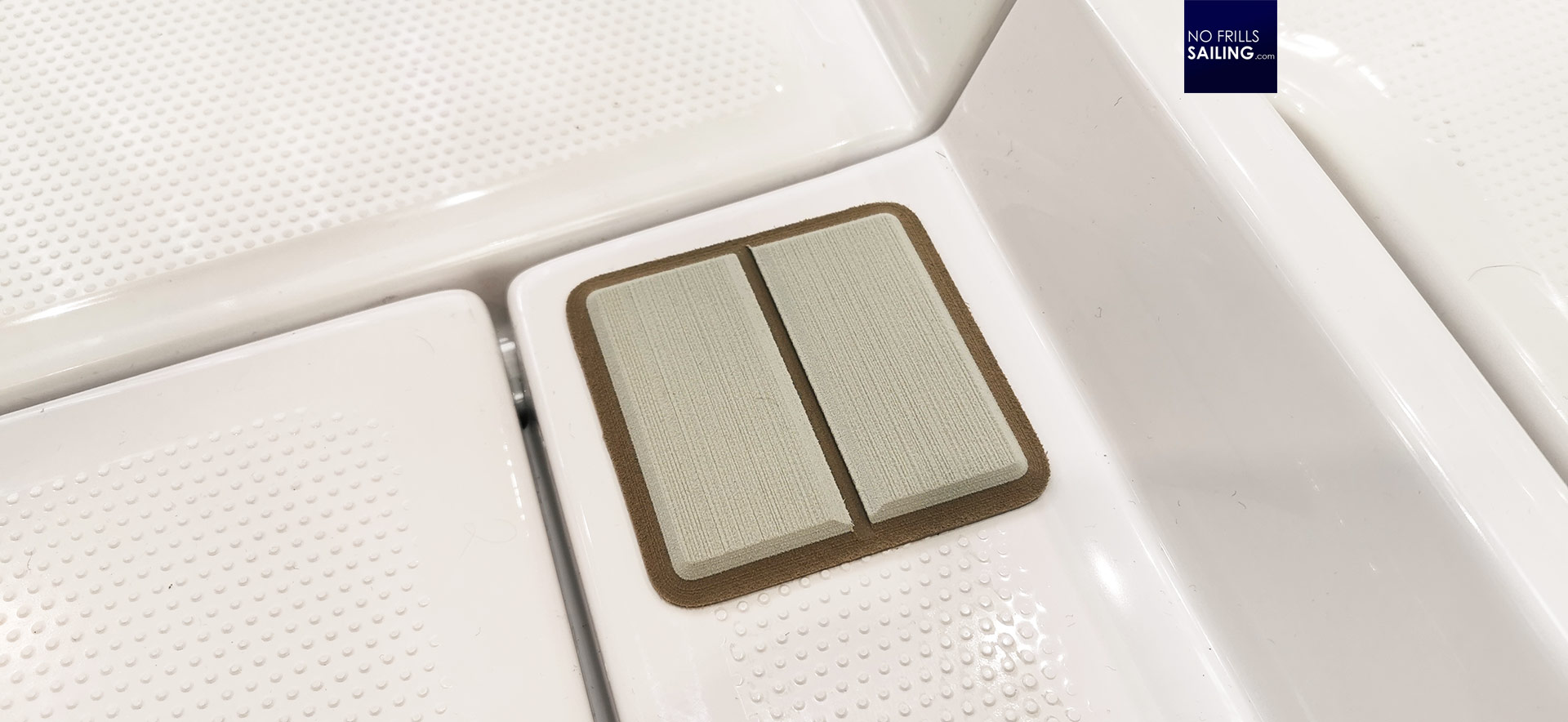
The guys came to our Beneteau stand, bringing a small piece of their product. For demonstration purpose they placed this piece of 6 millimeter EVA-foam flooring on the deck of the boat we´ve had on display there to show the product properties. I was astonished by the adhesive power of the SeaDek-specimen but also the possibility to have it removed and re-positioned again. This demonstration and a long talk with those guys had me persuaded that this had to be the best product used for my boat.
Past mistakes
But why doing everything new? Half a year ago I had already covered the cockpit deck of the First 27 SE in EVA-foam completely and the outcome looked very promising. Although my cutting capabilities – to have all the fake-decking battens aligned – haven´t been that pro and also I wasn´t able to deliver a machine-made look I was pretty happy with the outcome.
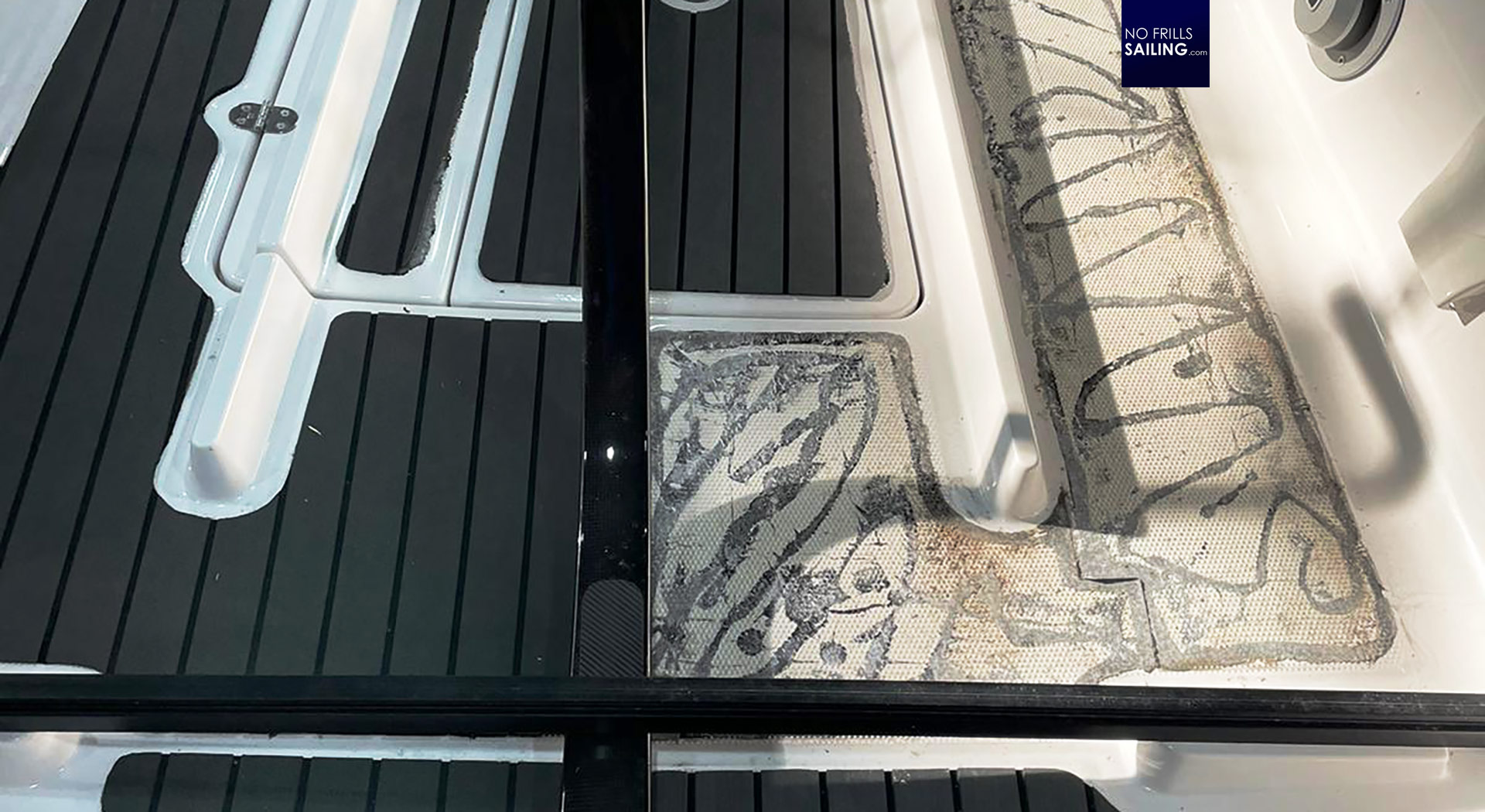
Well, no for too long: Just as the boat had hit the water in spring and temperatures rose for the first time, the sun began to hit the boat´s deck for long days at a time. Something chemical happened underneath the nice looking surface: The individual floor panels shrinked in size, revealing 3-4 millimeters of glue all around them.
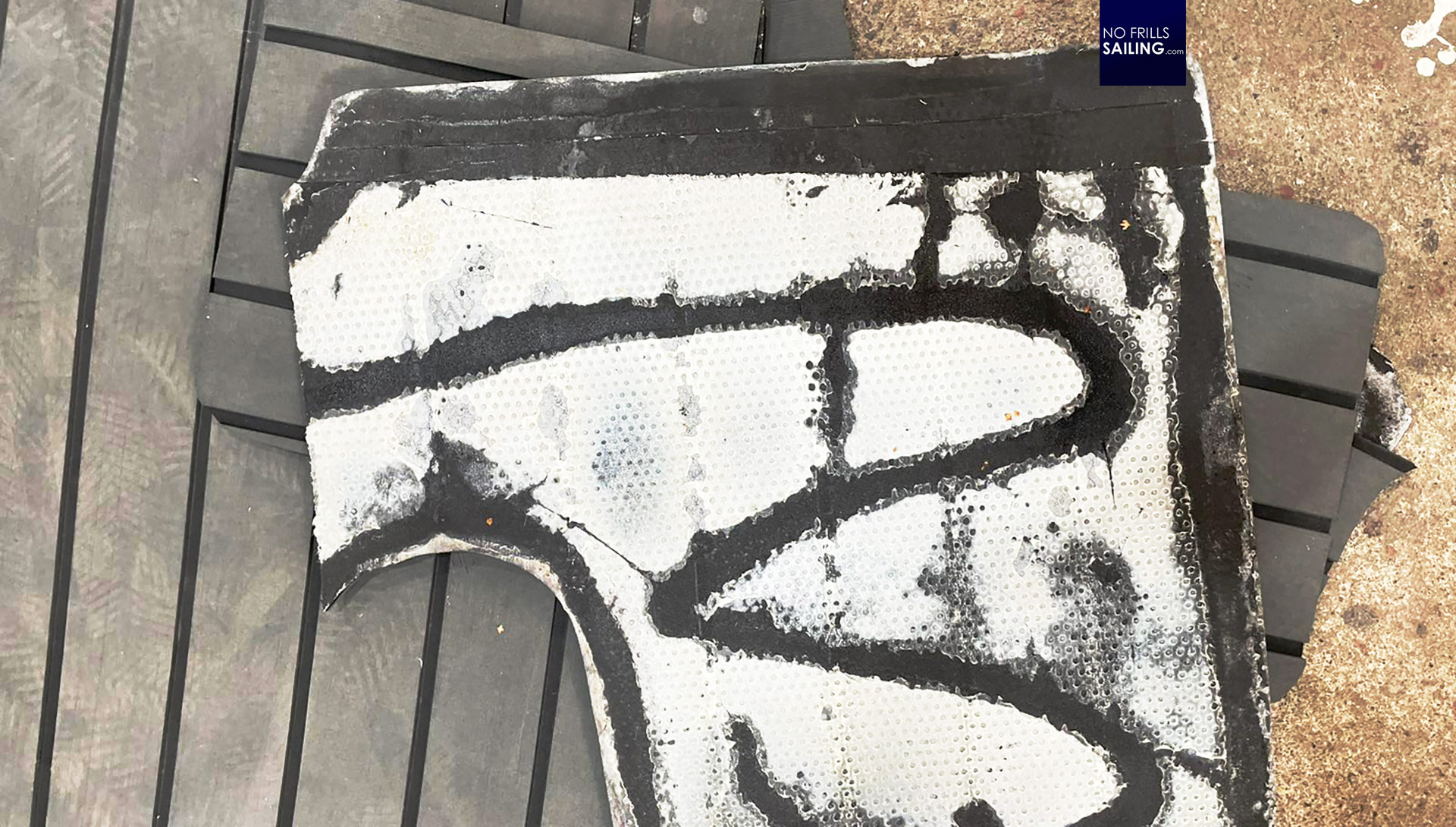
Secondly – and this was the worst – the adhesive powers faded and got lost all the way. The panels lost all the sticking power and were held place just by gravity. This was unacceptable of course: During my summer vacation sail we´ve had a handful of days of not so nice weather, wet and rainy. When sailing heeled – alas, all the time – those un-sticked panels lost grip and more than once I just slid and fell, using the panels as surfboards on my wet deck. So, of course, the decision was made to remove the decking panels all but once.
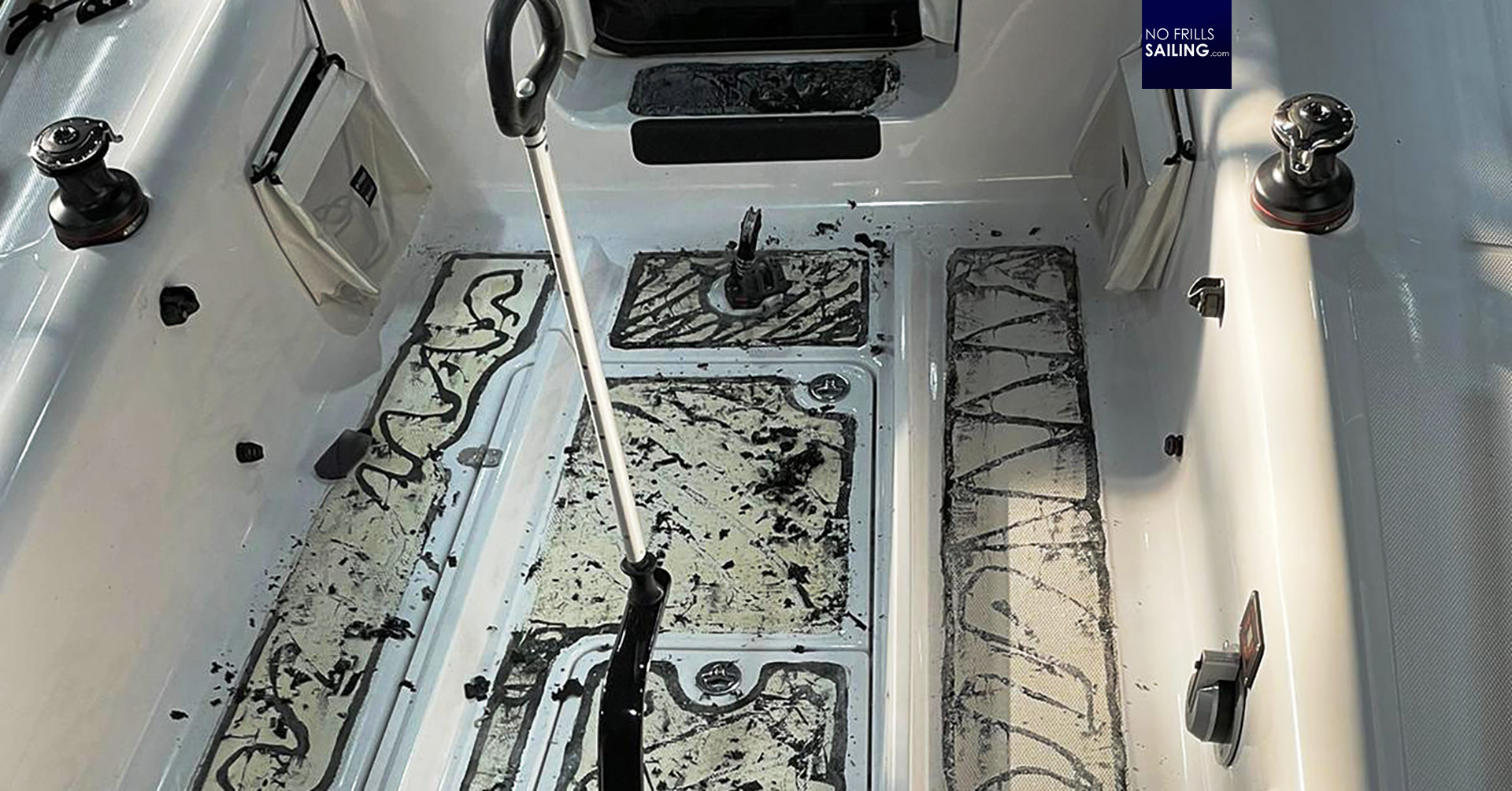
I could persuade my colleage and boatbuilder Finn to take on this – admittedly – awful job. The problem here is that removing the very EVA-foam panels wouldn´t do the trick. As I had tried to fix and glue the panels in place using Pantera glue, this was the real mess. All of the Pantera was still sticking like hell to the GRP of the boat´s deck. After hard negotiations about which wage he should receive, he greenlit and started working on the boat.
Acetone-Man!
Yesterday, during my mission in France, he started to send pictures by the hour documenting his efforts. I cannot say that I envied his work although I by myself stood soaken wet in autumn Atlantic Ocean-rain being cold and miserable, looking closely to the pictures I pitied him a bit.
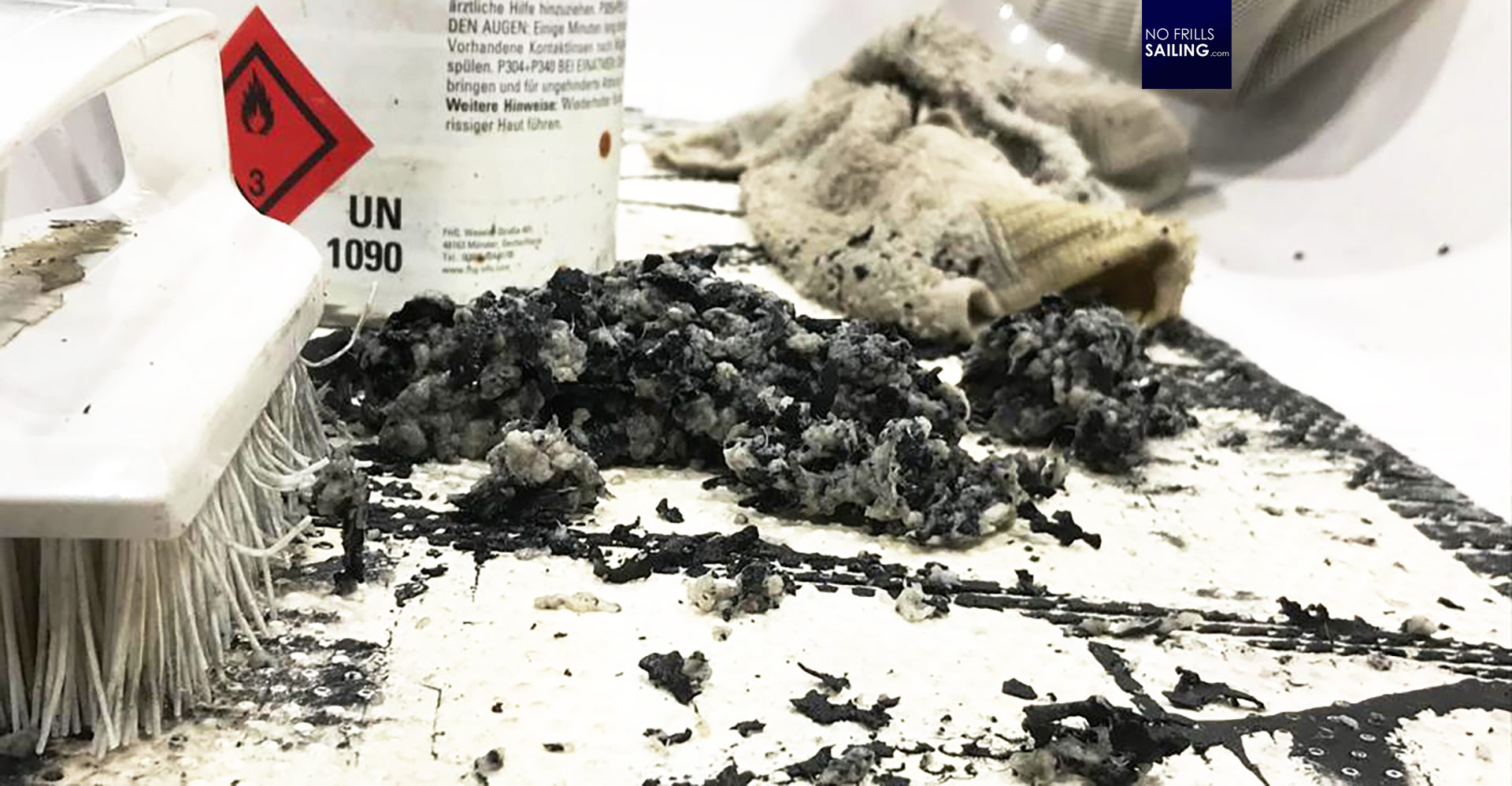
By using literally liters of acetone Finn tried to break up the chemical structure and bonding powers of the Pantera glue to the GRP. Having done it, he was to scratch off the black residue by hand using multiple tools. This mechanical technique would have to be strong enough to remove the black Pantera-glue from the deck but at the same time he had to make sure that the GRP and non-skid surface would´nt be damaged.
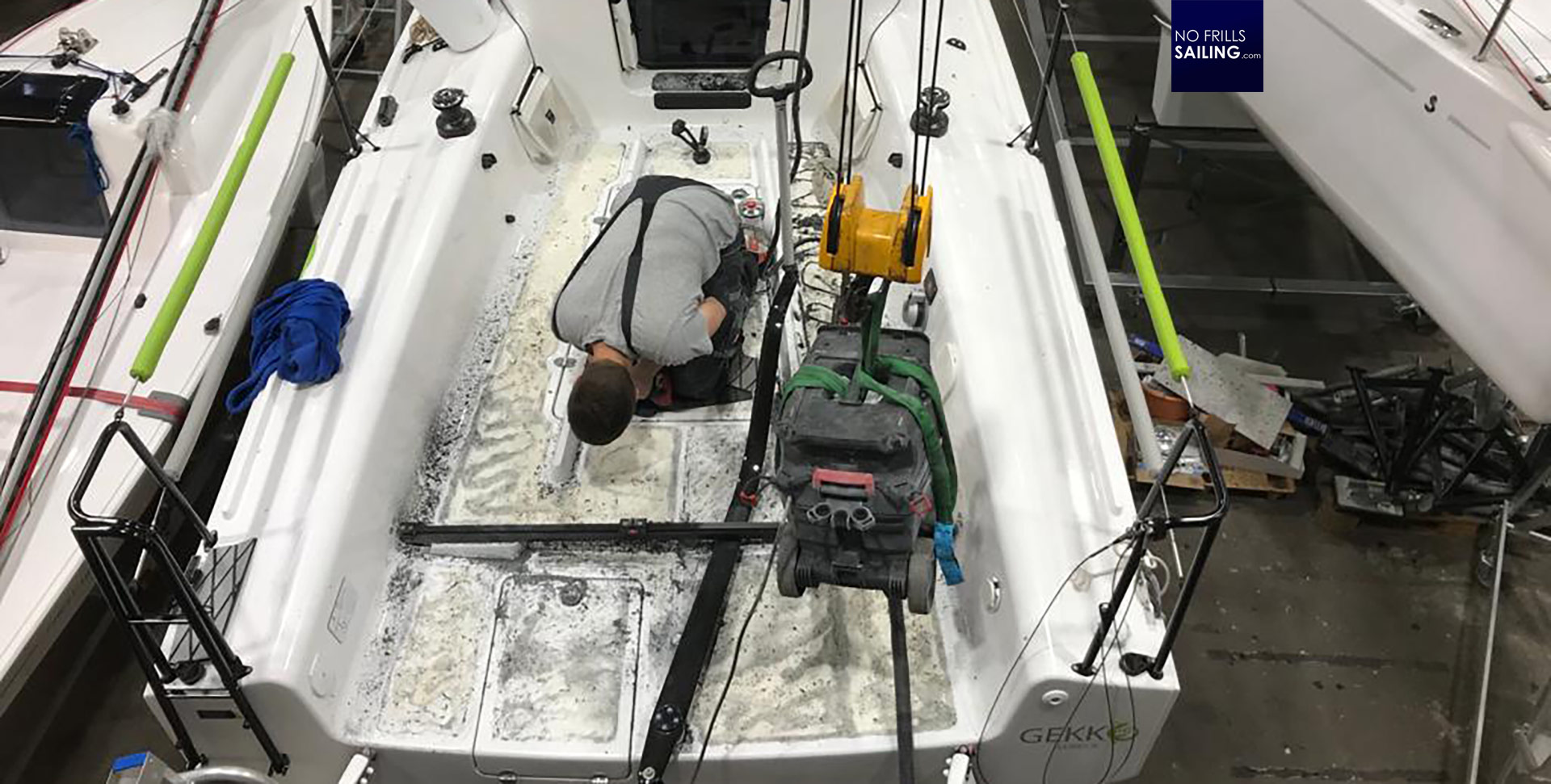
Part by part, square meter by square meter he worked his way aft from the entryway of the boat towards the mainsheet traveler track. Trying out multiple tools from smaller steel-chisel to more softer stuff, like rough bristle brushes, he eventually found a good solution and the best technique to balance the use of acetone and mechanical abrasive techniques.
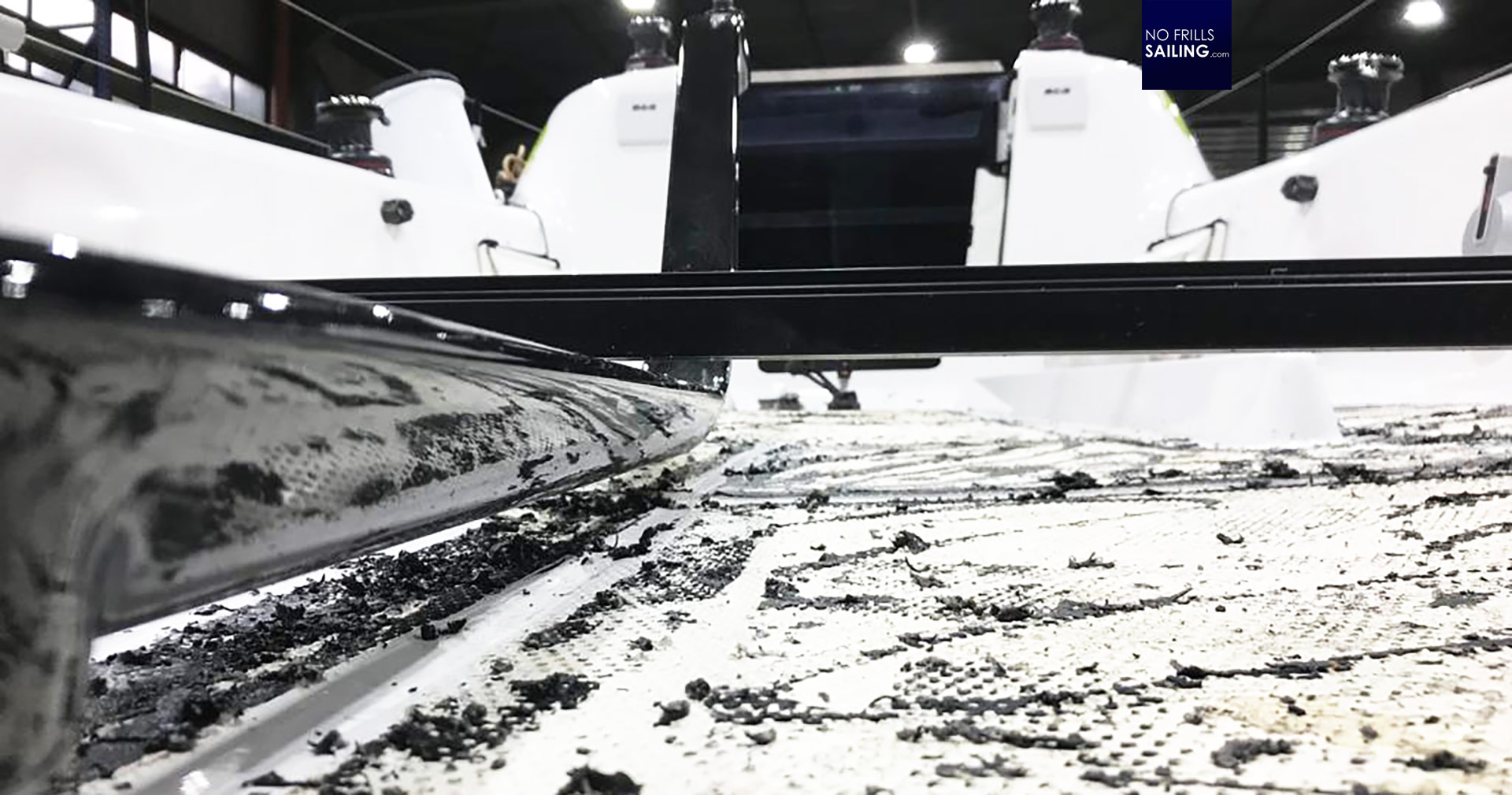
I received some whatsapp messages from other colleagues also working in our yards, stating their sympathy and commiseration for Finn´s situation. But also they expressed their astonishment how fast and efficient the removal of the otherwise bombproof Pantera glue was taking pace and at which high pace Finn was able to peel off the black pellets from the deck.
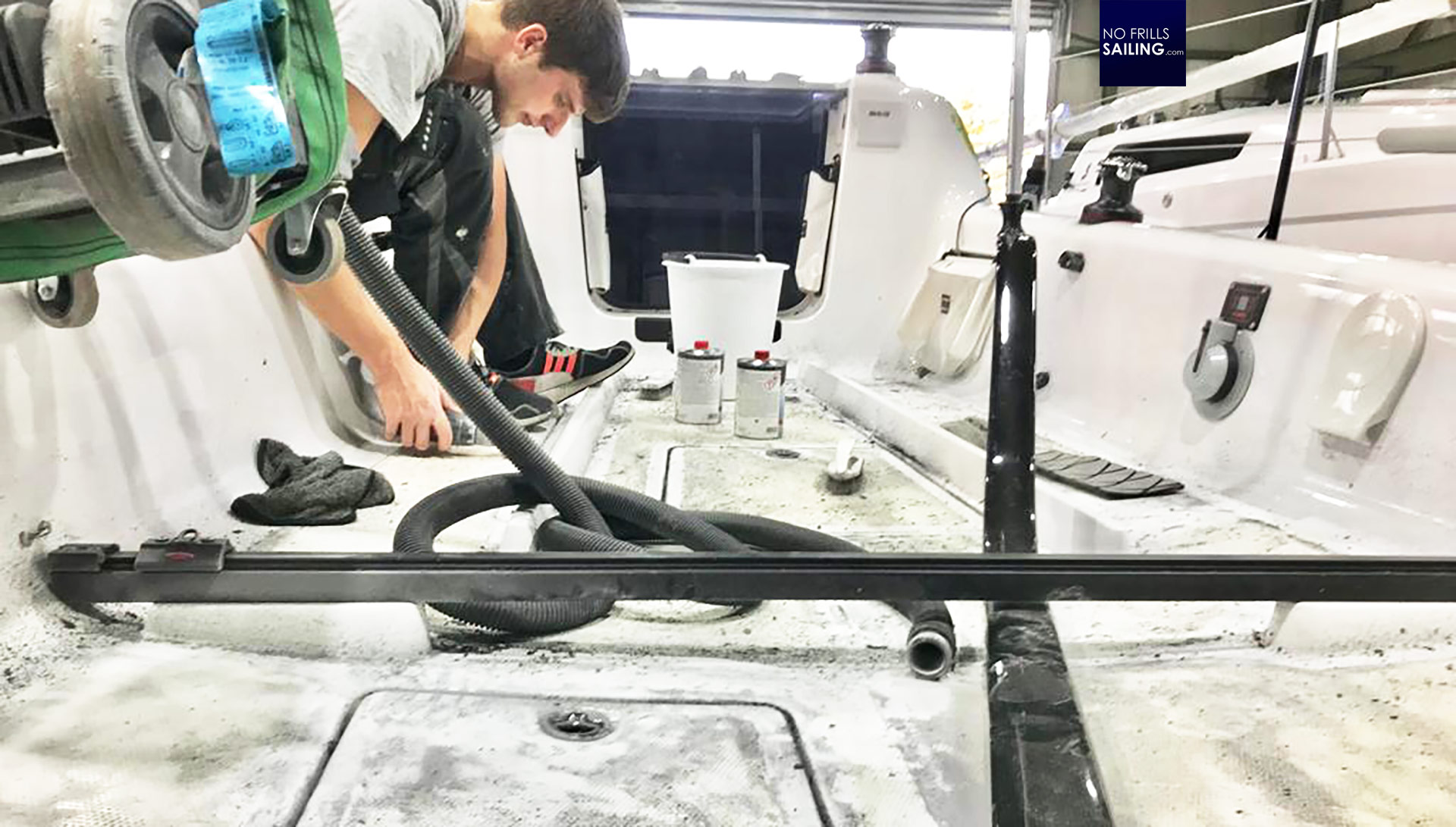
Eventually the whole boat was finished: After a full workday, some 8 hours of hard work, Finn texted that the deck was clean again. What a good news this was! After my grave mistake in trying to come up with a cheak DIY-solution on the decking, I would now be able to hand over sold GEKKO to their new owners with a professionally produced and applied brand new decking. So, what is going to happen next?
Pre-works done: Now´s the time for SeaDek
After I had provided SeaDeck with a CAD-based vector-data file of the non-skid areas of the First 27 SE provided by Seascape they have been able to plot panels in a ration 1:1 to check if size and position would fit perfectly. I know this technique from Solbian from fitting the solar panels already, this time it is even better: The print is done on transparent plastic so that I do not have to cut out the gauge models but would have to simply draw with an Edding where more material is needed or some could be taken away.
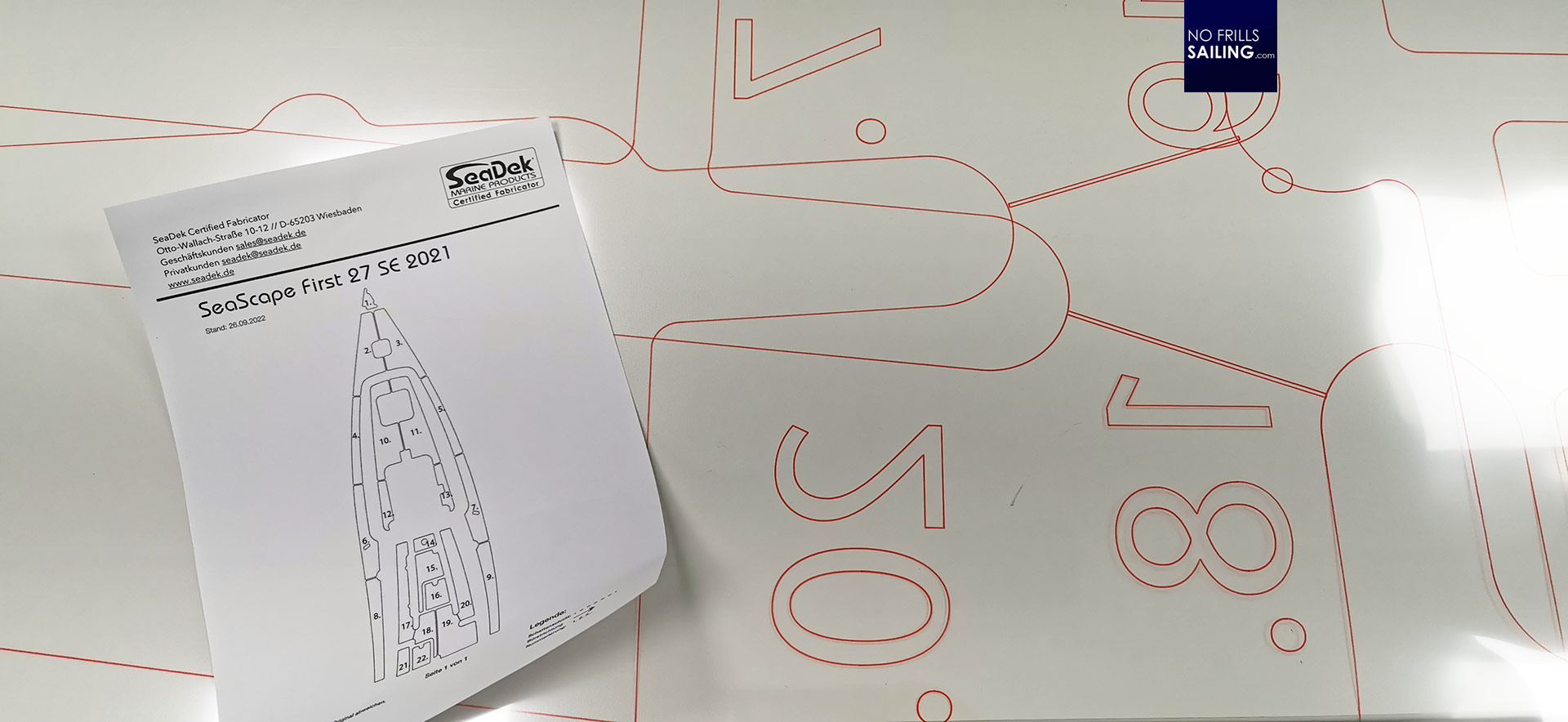
I plan to do this coming week upon arrival back from France. Sending those panels to SeaDek, they will start production of the EVA-foam decking parts and I hope to receive those in a 2-3 weeks time. Depending on delivery times, the boat will blaze with it´s new deck in a month´s time from now on and I am absolutely looking forward to see the difference in a direct comparison. Thanks for now, Finn, excellent work again!
You may also be interested to read these articles:
EVA-foam decking for my boat, parts 1, 2, 3 and 4
Teak is dead – what do the yards do? Parts 1 and 2
Buy cheap – buy twice
